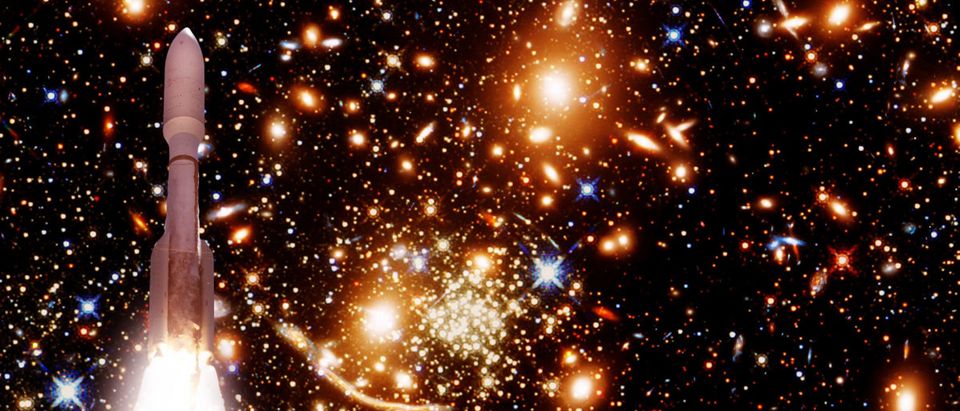“[T]he universe is actually super queer,” the self-described “black, Mexican, queer, neurodivergent woman” physicist Dr. Jessica Esquivel explains at the beginning of her recent TedX Talk. And it only gets worse from there.
She goes on to claim quantum theory describes “a world where queerness and chaos reign supreme.” According to the blue-haired Esquivel, the wave-particle phenomenon proves “we literally are non-binary” and quantum entanglement explains the “queer love” she shares with her wife.
Now, I’m not a physicist, but I do have an MA in English, and this is one of those rare occasions when it actually comes in handy. I wrote an entire master’s thesis on how metaphors from physics (specifically Einstein’s discoveries) got hijacked by social and artistic movements.
And that’s just what Esquivel is peddling here: metaphors. Saying the universe is “queer” is like saying I have butterflies in my stomach. I won’t learn anything about entomology by studying my own nervousness.
In Einstein’s day, the key word was “relativity.” He, of course, was only using it to describe time and space. Unfortunately, his theory debuted as World War One was ending and a new generation was beginning to question the previously rock-solid values of religion, patriotism and traditional morality.
D.H. Lawrence (the E.L. James of his time) actually thanked Einstein for “knocking” the “eternal axis out of the universe” and freeing people to pursue “moral (and sexual) relativism.” Newspapers jokingly described Einstein’s theories as “scientific Bolshevism,” attaching left-wing political connotations to his discoveries. Modernist writers like James Joyce and T.S. Eliot structured their own literary works to reflect Einstein’s complex, confusing, non-linear universe.
The problem with drawing these parallels is they’re completely arbitrary. Einstein’s theory overthrowing Newton’s might bear some resemblance to the communists overthrowing the tsar, but e=mc2 has nothing to do with Leninism. In fact, my thesis focused on how C.S. Lewis used the same Einsteinian ideas to combat modernist disillusionment and promote his Christian faith.
Esquivel describes an “epic battle” at the dawn of time between matter and antimatter in which they should have canceled each other out entirely. Instead, for reasons that still mystify physicists, “an infinitesimal amount of matter survived,” and all existence is therefore anomalous or “queer.” (RELATED: BARR: Does Our Political System Now Reflect The Matter/Antimatter Principle Of Mutual Destruction?)
Her argument, stripped of its scientific jargon, is basically that we have no idea why there’s something rather than nothing, so we should all be waving Pride flags and trans-ing our kids. But without the metaphor of queerness — which, once again, is totally arbitrary — the conclusion doesn’t follow from the premise. The English writer G.K. Chesterton, a contemporary of Einstein, also saw existence as a mysterious gift, but instead of using that as an excuse for sexual experimentation, he inferred that he should “pay for extraordinary joy in ordinary morals.”
Same question, opposite answers. If you’re gay, space must be gay, too. If you’re trad, then so is the universe. “Physics is a fascinating field,” conservative commentator Matt Walsh said in response to Esquivel. “And yet this woman … isn’t interested in the secrets of the universe. The only universe she cares about is the universe of her own small, fragile ego.”
Thankfully, there is nothing new under the (very heterosexual) sun. “If you take nature as a teacher she will teach you exactly the lessons you had already decided to learn,” Lewis wrote in his 1960 book The Four Loves. “[T]his is only another way of saying that nature does not teach.”


